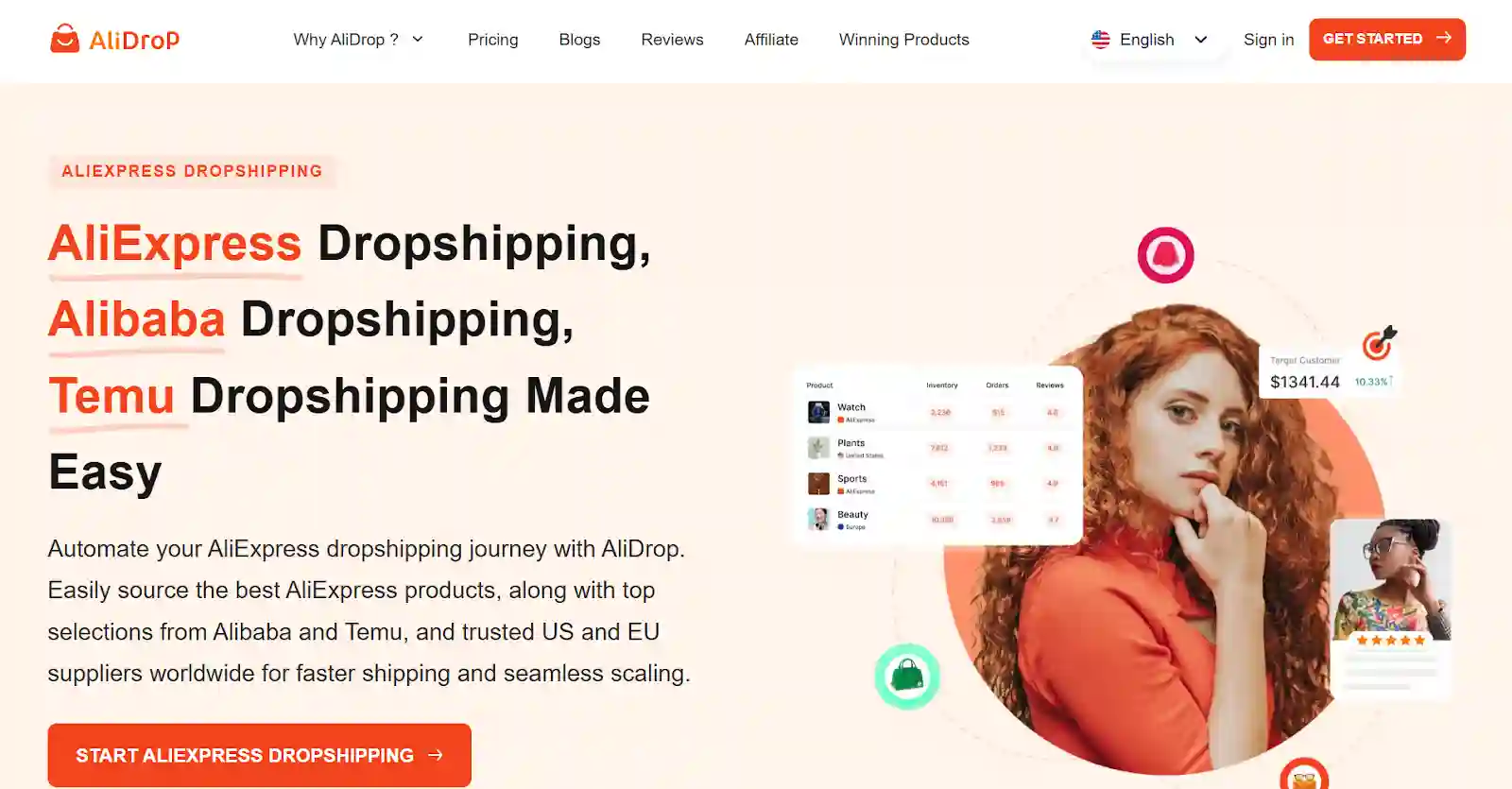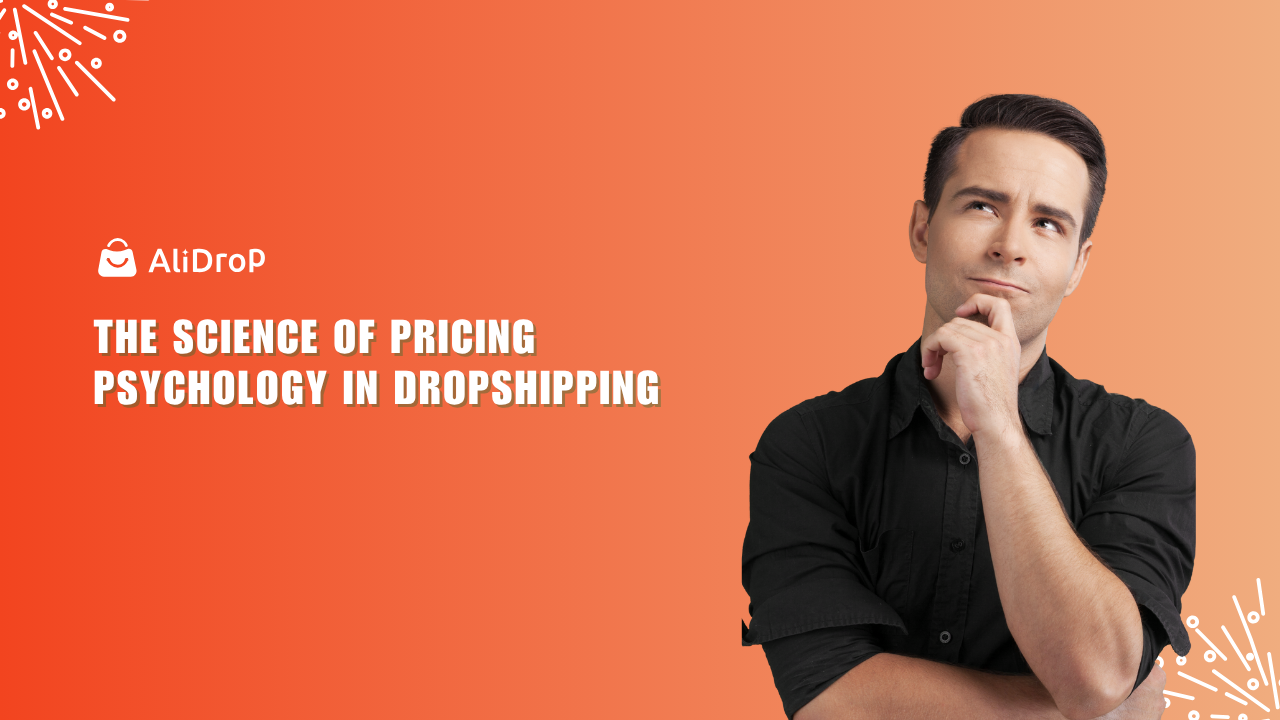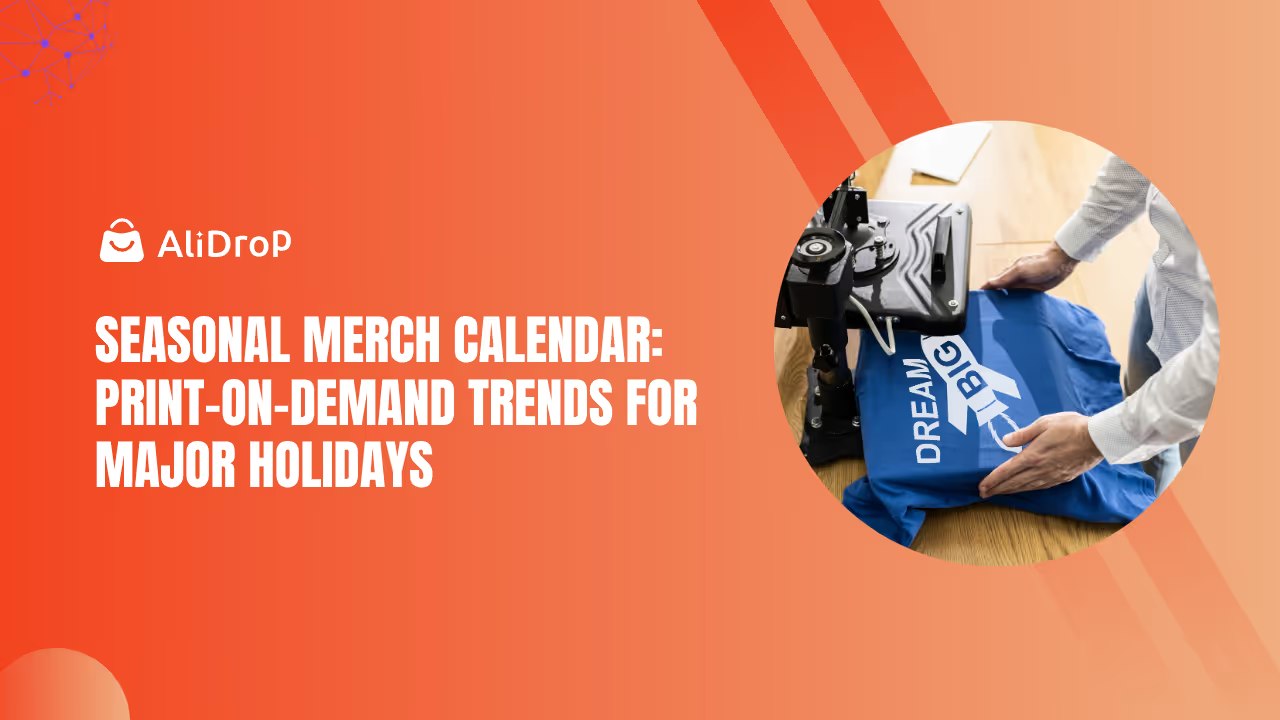Every online store starts with excitement. You find a product you love, set up your site, and imagine orders pouring in. But a few weeks later, you notice the same product on dozens of other stores, often sold cheaper. Suddenly, the dream turns into a price war you never wanted to fight.
That’s the trap most entrepreneurs fall into — competing instead of differentiating. When everything looks and feels the same, customers stop caring who they buy from. The only real advantage today is being impossible to copy.
This guide will show you how to make your store uncopyable. You’ll learn how to curate unique dropshipping products, build experiences that create loyalty, and shape a brand customers connect with. Because once your store stands for something distinct, competition stops mattering — and your business starts leading.
Ecommerce Differentiation Strategy: What “Uncopyable” Actually Means
Before you can make your store uncopyable, you need to understand what that truly means. Most store owners assume being different just means tweaking visuals or lowering prices. But real differentiation is about building something that competitors can’t easily copy — an identity, experience, and structure that sets you apart.
Different Beats Better
Every store tries to be better — faster shipping, cheaper prices, flashier ads. But “better” is temporary. Someone can always outspend or undercut you. “Different,” on the other hand, lasts. It gives your store a story, a voice, and a purpose that can’t be cloned with a few clicks.
Being different is about leaning into what makes your business unique. Maybe it’s your curated product style, your tone of voice, or how you make customers feel after every purchase. The details you control become your shield against imitation.
The Four Moat Families
Picture your business as a castle surrounded by water. The wider your moats, the safer your kingdom. In ecommerce, there are four key moats that make your store uncopyable: brand, product, experience, and data.
Your brand moat is what your audience believes about you — your story, your tone, your reputation. The product moat is the quality, originality, and thought behind what you sell. The experience moat is how it feels to shop with you — from packaging to customer service. Finally, the data moat comes from understanding your customers better than anyone else, using insights no competitor has.
You don’t need all four from the start. Build one moat well, then layer others as you grow. Over time, these moats reinforce one another and make your store almost impossible to duplicate.
The Six-Question Self-Audit
Before moving ahead, take a minute to reflect on where you stand. Ask yourself:
- What makes my store genuinely different from others in my niche?
- Are my best-selling products available everywhere else?
- Do I own any part of the post-purchase experience?
- How well do I understand my customers’ behaviors and desires?
- Is my brand instantly recognizable in voice and visuals?
- Could someone replicate my store in a weekend?
If most of your answers made you pause, you’re not alone. The good news is that differentiation is a process — one you can start building right now. In the next section, we’ll explore how to strengthen the first moat: your products and assortment.
Product & Assortment Moat: From Commodity Catalogs To Defensible SKUs
Your products are the heartbeat of your business. But if your store sells the same items as everyone else, you’re not building a brand — you’re running a vending machine. Creating a product moat means making your catalog harder to copy and giving customers a reason to choose you over anyone else.
Curate Like A Buyer, Not An Aggregator
Too many store owners fill their shelves with trending products instead of thoughtful collections. The difference between a random assortment and a curated one is intention. Buyers in successful retail stores don’t just chase what’s popular — they choose products that tell a story and fit a specific customer lifestyle.
Start by defining your store’s “no list” — the products you’ll never sell because they don’t align with your brand or audience. Then, create a “hero filter” for the items you will carry. This could include specific materials, colors, or use cases that define your store’s style. Curating like this makes your catalog feel designed, not copied.
Build Defensible Bundles And Systems
Bundling is one of the simplest ways to make your products harder to replicate. When you combine complementary items into systems or kits, competitors can’t easily compare your prices because you’re no longer selling the exact same thing.
Think of it as solving complete problems instead of offering single products. For example, instead of just selling a kitchen gadget, create a “starter cooking kit” that includes accessories, recipes, and cleaning supplies. You’ve now added value that extends beyond the item itself — and that’s not easy to copy.
Move Toward Private Label And Time-Boxed Exclusivity
If you’ve found products that consistently perform well, it’s time to move beyond simple reselling. Reach out to suppliers and negotiate small manufacturing runs with your branding or packaging. Even a minimal private-label adjustment can separate your version of a product from the rest of the market.
Another approach is to secure short-term exclusivity. This could mean negotiating a 30- or 60-day agreement where only your store carries a specific color, variation, or bundle of that product. It doesn’t have to be long-term — even limited windows can give you a powerful head start in customer attention and search rankings.
How Alidrop Fits Into This Strategy

Finding reliable suppliers who offer flexible terms or unique variations can be a challenge. That’s where platforms like Alidrop come in. It gives store owners access to suppliers that are open to negotiation, allowing you to request exclusive product variations or private-label opportunities directly.
Using these connections, you can secure early access to unique products or regional exclusivity. Over time, these small advantages add up, creating a moat around your catalog that others can’t easily cross.
Key Metrics To Track
Once you begin building your product moat, keep an eye on these metrics:
- Percentage of revenue from exclusive or private-label SKUs
- Bundle attachment rate (how often customers buy sets instead of singles)
- Repeat purchase rate for curated collections
- Average margin increase after adding exclusivity deals
Each of these metrics shows how much stronger your catalog is becoming. A product moat isn’t just about inventory — it’s about strategy. When your catalog reflects intention and ownership, your brand becomes much harder to imitate.
Experience Moat: Post-Purchase, Community, And Member Value
While products attract attention, experiences create loyalty. Anyone can copy your catalog, but they can’t replicate how customers feel when they shop with you. Building an experience moat means creating emotional stickiness — turning one-time buyers into loyal advocates who wouldn’t dream of switching to a competitor.
Design The First Five Minutes
The customer journey doesn’t end at checkout — it begins there. Those first few minutes after an order arrives shape how customers remember your brand. Create an unboxing experience that tells your story without saying a word.
Include small touches like a personalized thank-you note, care instructions, or a QR code linking to a quick setup guide or welcome message. These moments surprise people, turning a transaction into an interaction. They remember how you made them feel, and that’s what makes them come back.
Create VIP Tiers That Feel Like A Club
Your most loyal customers want to feel seen. Give them a sense of belonging by creating VIP or loyalty tiers that offer early access to products, limited editions, or behind-the-scenes content.
Instead of generic reward points, build a “club” that matches your brand’s personality. For example, if you sell wellness products, offer members a monthly self-care checklist or exclusive live session with a coach. When your brand becomes part of their lifestyle, it moves from being replaceable to irreplaceable.
Offer Proactive And Personal Customer Service
Reactive support solves problems. Proactive service prevents them. Message customers after a few weeks to check how they’re using their purchase or offer tips to get better results. This approach feels personal and builds long-term trust.
You can also categorize customers based on their experience level — new buyers, regulars, and loyal advocates. Send each group relevant communication: how-to guides for newcomers, sneak peeks for regulars, and exclusive collaborations for loyal fans. Small adjustments like these transform customer service from a cost into a competitive edge.
Build A Community Around Shared Values
People don’t just buy from brands; they join movements. When your brand represents a set of values or a lifestyle, your customers become part of something bigger. Build an online space — even a private social group or email community — where customers can share their stories, feedback, or product photos.
Communities generate advocacy that can’t be faked. A group of engaged customers who love your brand will defend it, promote it, and even help shape its future. Competitors might copy your design, but they can’t copy your tribe.
Key Metrics To Track
To measure how well your experience moat is growing, watch these indicators:
- Repeat purchase rate after a second order
- Customer satisfaction (NPS or review scores)
- Volume of user-generated content per 100 orders
- Number of community interactions or club sign-ups
Each metric reveals how deep your relationship with customers runs. When shoppers feel connected beyond the transaction, your store becomes more than a marketplace — it becomes a part of their story.
Data Moat: Turn Zero/First-Party Data Into On-Site Differentiation
If products and experiences form the outer walls of your brand, data is the foundation holding them together. The more you understand your customers, the harder it becomes for competitors to steal them. Building a data moat means collecting and using insights that belong entirely to you — not dependent on ad platforms or third-party tools.
Capture Data That Actually Matters
Data doesn’t mean endless spreadsheets. It’s about asking the right questions at the right time. Instead of chasing vanity metrics, focus on capturing information that helps you serve customers better.
Add short, purposeful quizzes on your website that recommend products based on preferences. Ask post-purchase questions about what customers liked most or what could be improved. Even something as simple as learning their style, goals, or favorite product categories helps personalize their next visit.
This kind of zero-party data — information customers willingly share — is gold. It tells you what they care about before they buy, allowing you to create experiences that feel tailored instead of automated.
Segment Customers Into Meaningful Cohorts
Not all customers are alike, and treating them the same is a missed opportunity. Start grouping your audience into meaningful cohorts based on their behavior or intent.
For instance, you might have first-time buyers, repeat purchasers, gift shoppers, or collectors. Each group needs a different message. A first-time buyer might appreciate a quick-start guide, while a repeat buyer could receive a personalized thank-you offer or sneak peek at new arrivals.
By segmenting your audience this way, you speak directly to their motivations. Over time, this approach builds relevance — and relevance is something competitors can’t easily duplicate.
Use Data To Personalize The Shopping Experience
Personalization is no longer a bonus — it’s the expectation. When customers see products, recommendations, or bundles that match their behavior, they feel understood.
Use your collected data to dynamically adjust what appears on your homepage or product pages. Highlight “recently viewed” items, show bundles based on past purchases, or feature new arrivals that align with customer interests.
Even small touches, like addressing returning visitors by name or recommending items that complement their last order, can make a big difference. Personalization makes your store feel alive, while generic stores still rely on guesswork.
Protect And Own Your Data
Owning your data means independence. When you rely too heavily on paid ads or social media algorithms, you’re building your business on rented land. Focus on collecting first-party data through your website, email lists, and communities — assets that no one can take away.
Use clear consent forms, privacy settings, and secure storage practices. When customers trust that their information is safe, they’re more likely to share it. Transparency doesn’t just meet legal standards; it builds loyalty.
Key Metrics To Track
Monitor these metrics to understand the strength of your data moat:
- Quiz or survey completion rate
- Repeat purchase frequency among segmented customers
- Open and click-through rates from personalized emails
- Conversion rate from personalized on-site recommendations
These numbers reveal how well you’re turning insights into impact. Data-driven personalization doesn’t just increase sales — it builds relationships that competitors can’t access or imitate.
Conclusion: Build One Moat Now—Then Stack The Rest
Making your store uncopyable doesn’t happen overnight. It starts with one small, deliberate move — refining your products, improving the experience, or personalizing how you connect with customers.
Focus on what makes your brand feel different, not just better. Each moat you build adds another layer of protection and loyalty. Over time, those layers turn your store into something no one else can replicate.
When you stop chasing trends and start defining your own space, competition fades — and your brand finally stands alone.
FAQs About Making Your Store Uncopyable
How do I find unique dropshipping products?
Start with intentional research rather than random browsing. Use lesser-known suppliers, local makers, and trend platforms to find differentiated items that match your brand. Validate supply flexibility before fully committing.
What are the best unique products to dropship in 2025?
Look for items with clear demand, durability, easy shipping, and margin potential. Curated variants, hobby niches, and bundle systems tend to outperform generic SKUs.
Is dropshipping still profitable if I focus on unique products?
Yes—when you avoid saturated SKUs and build defensible offers. Strong suppliers, post-purchase experience, and margin discipline help defend profitability from copycats and ad cost shifts.
Where can I source unique dropshipping products?
Use a diverse sourcing strategy: niche supplier directories, direct maker partnerships, and platforms that support exclusivity. Maintain backup suppliers for risk mitigation.
How do I validate whether a unique product will sell?
Use a lean validation approach: test interest via small listings, review search trends, and run margin analysis before scaling with paid ads or inventory.























